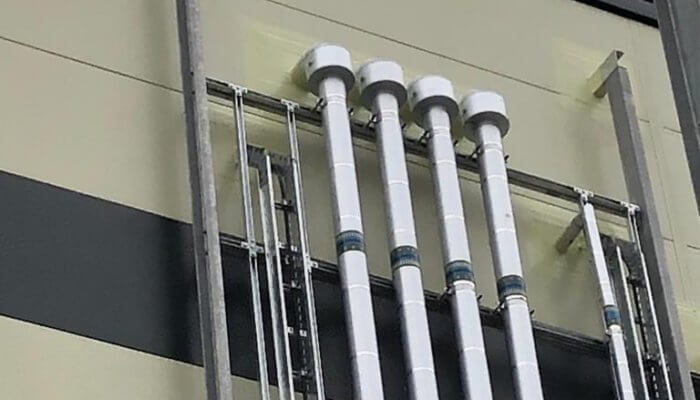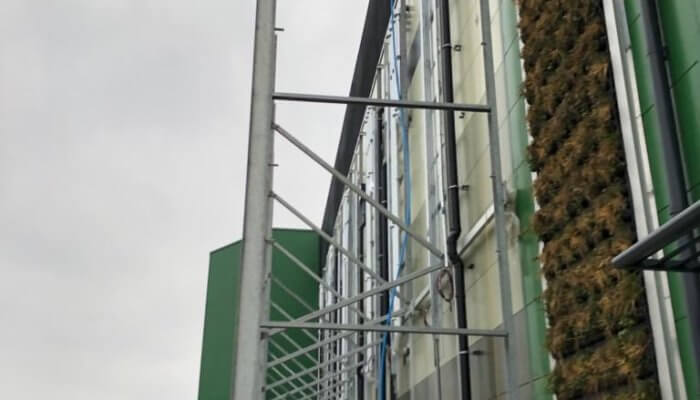A cable tray is a support system that creates a rigid structure for wires and cables to travel along. An alternative to open wiring or electrical conduit systems, cable trays are easy to install and maintain. Their open designs also make it simple for new cables to be added or for wiring to be changed since the new cables can simply be laid in the trays, rather than fed through conduit pipes.
Cable trays are often used on external walls and roofs, before cables enter the building through a roof penetration or vertical wall penetration – and effective weatherproofing of cable trays is critical to prevent wind or rainwater ingress. They may also be found within ceilings and internal walls, under floors, and they may also be used to support wires and cables as they cross open spans.
Typical uses include supporting electrical distribution cables, control and signal instrumentation and data and telecommunications cables, including both copper and fibre-optic cables. Cable trays are found in all types of buildings, including commercial, office, and retail spaces, as well as factories, schools, hospitals, and leisure facilities. They are also extremely important for data centres, as these applications rely so heavily on the electricity supplies and data that flow through the cables that enter the buildings.
Many different types of cable trays are available. GRP cable trays are a popular choice due to being non-metallic, lightweight, and easy to install. Metallic cable trays are also commonly found; these are usually made from galvanised steel, stainless steel, or aluminium.
Various designs and formats are also available, including channel-type, single rail, ladder-type, trough-type, and mesh/basket types. The right choice will depend on project requirements and client preferences.
As experts in custom GRP mouldings and weatherproofing, we can provide a complete service for all your cable tray and building penetration requirements. You can find out more by visiting our data centre solutions page, or submit an enquiry through the get help with your project form.

